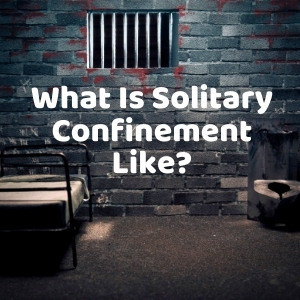I am embarrassed to admit this, but I spent 12 months and 25 days in Solitary Confinement in NY State Prison. I was put in solitary on 5 separate occasions, at 5 different prisons, all for non-violent drug use. The longest consecutive time I spent in solitary was 123 days straight or 4 months and 3 days just for getting high. I spent almost a third of my total prison time in solitary. This Experience has caused devastating long-term effects and haunts me in a daily basis.
This post is very hard to write. I am reluctant to write about something in my background that may change peoples opinions of me, potentially hurt my future job opportunities, or cause people to view me as weak, but I think this needs to be shared to help others.
My drug addiction landed me in prison for 4 years. I got sentenced to 3 1/2 years of which I did every day of that 3 1/2 years. I was also sentenced to a parole violation for a single dirty urine in which I did 6 more months in prison (3 of those months were at Reception and 3 were at Willard Drug Treatment Center, which is a prison rehab boot camp).
What Is Solitary Confinement Like?
Solitary confinement is also known as, The Box, The Hole, The SHU, The Coop, or Segregation. Extreme isolation causes hallucinations, extreme anxiety, paranoia, claustrophobia, depression, loss of reality, sensory deprivation, muscle and bone atrophy, and drastic weight changes. Solitary was waking up to a nightmare on a daily basis. Living weeks, months, or years of your life inside the same 6-10ft room is unbelievably painful. The anxiety and insanity caused by isolation is a horror I can’t put into words.
Inmates call solitary the box, the hole, the shoe (SHU), or the coop (chicken coop). The actual name the state gives it is the SHU (special housing unit or segregated housing unit). The first day you get into solitary there is a handbook sitting on your desk that explains how everything is going to work. Although these are the guidelines that the facility has to follow, it doesn’t always happen that way.
No Oversight
One of the major problems I noticed in solitary confinement was that it’s just guards and inmates in there. A few times a day for short periods counselors and nurses make their rounds. When something happens inside the box there are no others to confirm or back up a story. The guards have complete control and leeway to do whatever they please with almost no repercussions.
A certain guard whose name I will not say, but let’s just call him H. H liked to take our tray of food and throw it in the slot so the food spilled all over the floor. When this happens it forced me to make a choice of eating off the floor because I was so hungry or saying screw it. Either way, It was in my cell so I had to use the 1 roll of toilet paper we get per week and clean the floor.
H also liked to debt guys on their food. Lunch comes at roughly 11:15 and they ring a bell before lunch. If anybody was still sleeping when H was at your cell he would walk right by. He screwed me on my meals on more than 4 occasions. All the other guards would pound on the door and wake you up, they had some decency, not H. I filled out multiple grievances on H and all that did was piss him off. So when I complained I got punished for it.
**NYS is getting better with placing cameras inside the halls of solitary, but the guards still have control of which cameras to turn on and which tapes to delete or keep**
Your Word Vs. Their Word
When I was in Groveland’s box, 2 days after Thanksgiving 2015, the guards caught me with pills. I had bought some sleeping pills from my neighbor in the box. I was so depressed and tortured I could not sleep more than 2 hours at a time.
The guards were getting ready to transfer me from that solitary to another one, and they strip-searched me before putting me on the bus. This is when they found the pills. I figured I was going to get a ticket (disciplinary write up) and have extra solitary time. The sergeant told the other guards “Put him back in his cell and put him back hard” I was so worried and focused on getting the extra time I didn’t know what he meant.
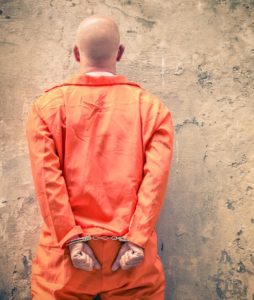
Smash-Smash-Smash
My arms were cuffed behind my back. The guard behind me smashed my head into each cell as we walked by. When we got to my cell the guard in front gave my open ribs a nice shot which knocked the wind out of me and maybe cracked a rib, definitely at least bruised. My head was bleeding pretty bad and my ribs hurt for the next 3 months. They threw me in my cell still handcuffed, which is completely against the rules, and left me for what felt like 2 hours but was probably only 20 minutes, to bleed on the ground. After 30 minutes they came in and took off my cuffs off and left me.
The next day I saw the nurse, when she asked me what happened I could not tell her the truth. If I did I would get another ass whooping a lot worse. The guards already filled out an incident report that said I was hitting my own head against the wall in the cell.
I never reported this incident to anyone. When my parents came to visit me I told them but that was it. I understand that there are many inmates who lie and just try to get revenge on guards by reporting fake stuff. But there are also many good inmates who are scared to report stuff like this. I was scared because I knew if I did report this the rest of my solitary time would be pure torture.
A joke we used to say in prison was that if you fight one of your tickets (disciplinary hearing) you need at least 100 witnesses or its pointless. Basically what that means is that you can have 1 guard that says something happened and 20 inmates that say it didn’t and 99% of the time they listen to the guard.
23/1
One thing I want to clear up right from the start is the myth about 23/1 or 22/2. When guards and public officials talk about solitary they say that the inmates get at least 1 hour of recreation a day and can earn extra hours if they behave, that’s why they call it 23/1 (23 hours locked in your cell, 1 hour of recreation).
Have you ever seen those cages at the zoo that are half inside half outside? The ones where the animal can come in and be in the warm inside enclosure and then go through a little doggie door type thing and have part of their cage outside?
That is what your hour of recreation is. In the back of most of the solitary cells in NYS, there is a door that opens up for 1-3 hours a day. When you go out this door you have a roughly 6 ft wide, 3 ft long, 8 ft high cage which is your recreation. I didn’t even have enough room to do jumping jacks without hitting the side metal fencing. During your hour of recreation, there is no basketball, jump rope, weights, or anything. All that happens is your 6 ft – 10 ft cell becomes a 6 ft – 13 ft cell for 1 or 2 hours.
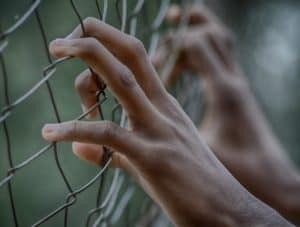
Extreme Psychological Effects
All 5 of my trips to the box were very similar as far as effects on my mind.
- Days 1-4 are filled with excessive sleep. During these first few days, I could not believe this was happening. I was in denial and couldn’t accept reality, I went into hibernation mode. My body would basically shut down out of anxiety and depression and I would sleep 16-18 hours a day.
- Days 4-8 I would partially accept my circumstances that I’m going to be stuck here for 4 months because I smoked a joint. Along with finally coming to terms with the situation would be the evil depression playing mind games. All I would think about was spending months in this cage. “What time is it?” “How many days have gone by?” “Does my family know I’m ok?” “How can I get out of here?” “Suicide is the only way out” “Is someone talking to me?”
- Day 8-9 was usually the time for me that the major psychological effects would start to kick in. I suffer from depression due to the 5 concussions I got In high school and college football. My depression would hit a low I didn’t know was possible at this point.
- Day 9- End The next 110 days were a mixture of depression, suicidal thoughts and actions, hallucinations, paranoia, lack of stimulation, and complete if not borderline psychosis.
**Yea That’s Right… in 2014-2015, NY state prison sentencing guidelines for solitary stated that you can get between 30-90 days for your first dirty urine 30-180 for your second and up to 1 years for your third. Put that into perspective, I’m a drug addict getting no treatment. I’m in one of the most depressing and dangerous places on the planet and I smoked a joint to escape reality. Got caught and now I’m in solitary for 4 months straight. With the new lawsuit in place a lot of these long solitary sentences for non-violent offence’s have been changed.**
“It’s hard to give a reasonable argument that you can provide adequate treatment to someone with serious mental illness who’s locked up in a cell for 23 hours a day,” he says. “Our correctional system has become our mental health system for too many people.”
Jeffrey Metzner, MD, a clinical professor of psychiatry at the University of Colorado School of Medicine
There are many great nurses and counselor’s and even some guards that try to help, but the rules and guidelines set by Albany don’t allow much leeway. So many counselor’s see that seriously sick and mentally ill people are being held in solitary and are deteriorating by the day, but there is nothing they can do about it.
Suicide
Many men and women around the country have committed suicide in solitary and many more have tried. Data shows that prisoners in solitary account for about half of all prison suicides.
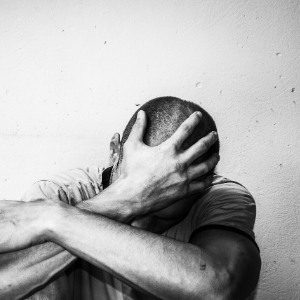
When I was on my first trip to solitary on about day 25 or so I became so psychotic I decided I could not take any more. I started buying medication from all the guys in cells around me. Any and all meds they had and were willing to sell I bought. I was going to stack up 100 pills or so and take them all. I would fish with the guys near me and trade stamps or food for their pills. A few days later I was taken out of my cell to see the counselor. When I was with the counselor the guards decided to search my cell and they found all the pills.
I understand that what I did was wrong and I had to get punished for breaking the rules, but I don’t think that the punishment fits the crime. I was documented as having a major depressive disorder and was on antidepressants, I already expressed to the counselor that I was having suicidal thoughts, and now they had proof to show that I was planning on taking action. After they found the pills and I went to my disciplinary hearing they added 90 more days on my solitary time and said have fun. No mental health treatment, no help… just more solitary time. To add insult to injury they stopped giving me my own antidepressants. When they stop giving anyone meds in the box they don’t wean you off, they just stop one day.
The next week I was in and out of major psychosis. My brain was trying to function without the medication I had been taking for 7 years. I was put on an antidepressant after a series of concussions I suffered in high school and college football. They switched my cell to put me with someone who was doing more solitary time like myself. My new bunkie’s name was Paulie.
No More Hope
2 nights after the disciplinary hearing that resulted in my solitary time going from 60 days to 150 days, I hit rock bottom. Whenever a shred of hope would creep into my brain all I had to do was look at the walls and that hope would be crushed. All along the walls in solitary are calendars written by past inmates. They would use a marker or cool-aid mix and make calendars on the wall. I would look at these calendars and think about how I am only on day 28 of 150. Every day when I woke up it felt like I was waking up in the worst nightmare I have ever had. The only time I was ever at peace in the box was when I was sleeping, which was a rarity.
At roughly 2:30 a.m., I was physically Ill with anxiety. I kept throwing up just thinking about 150 days, 150 days, 150 days. Every day felt like a year and now I had to do 5 months.
I took a sheet and wrapped it around my neck with a makeshift noose and tied it to the little ladder leading up to the top bunk. I put soap on the floor so my legs couldn’t get traction and tried to end it all hanging from the ladder. Paulie had a back problem so he was on the bottom bunk. About 30-35 seconds into my attempt Paulie woke up. He popped out of bed and grabbed me under my armpits and lifted up until I had a steady footing. If it was not for Paulie, I would not be here today writing this. After I got down Paulie talked with me for an hour or so until I was halfway stable.
All I could think about before and during that suicide attempt was the pain my family would endure for the rest of their lives. Putting my family through that pain is my greatest fear in life, yet I felt like I had no other option to stop the misery and insanity of the box.
Suicide Protocol
The cells in solitary are designed so that inmates cannot commit suicide. There is nothing on the ceiling or walls to tie anything to. All the edges of the bed, table, toilet, and shower are rounded off, and everything is bolted to the floor. The light in your cell is a square shape that is rounded at the edges so nothing can be tied to it.
*Side note about your light, It never goes off, you have to sleep in a room lite up 24 hours a day.*
When Someone tells a guard or counselor they are suicidal the guards immediately take you out of your cell. You are stripped naked and put in a suicide vest. This vest is like one of those vests you have to wear at the dentist or doctors office when you get x-rays. Inmates call them the Barney Rubble suit or the g-unit suit. You are then placed in a cell that has nothing in it, no pillow, no blanket, no mattress, nothing. A guard is stationed outside your cell 24hrs a day for 2-3 days and they watch everything you do.
You sit in this cell for 3 days. Most inmates I’ve spoken to including myself, say that sitting in this cell actually makes their suicidal thoughts worse. After a few days, the doctor asks you if you’re still suicidal? Whether or not you’re still suicidal it’s in your best interest to say that you feel better. You want to get out of this damn cell and get back to a normal solitary cell with a blanket and a few books. A cell where you can go to the bathroom in an actual toilet, not in a bedpan with a guard watching you.
“It’s a standard psychiatric concept, if you put people in isolation, they will go insane…. It’s a big problem in the California system, putting large numbers in the SHUs
[Secured/Special Housing Units]… Most people in isolation will
fall apart.”
— Sandra Schank, staff psychiatrist, Mule Creek State Prison, California.
Physical Effects
I weighed 250 lbs and was working out daily in general population in prison. My first trip to the box (113 days), I barely worked out. I had no interest in working out because my depression was so bad. When depression gets so severe it will manifest in physical form as well. I was throwing up, shaking, sweating, and I lost interest in everything. In general population, inmates have a choice of extra food if they would like. If you want 1 or 3 scoops of potatoes you can get more or less. In the box, all the food comes pre-assembled on a little tray.
The serving size they feed inmates is borderline torture. I had no way of actually measuring the amount of food or calories, but I would guess the average daily caloric intake of an inmate in the box is 1300-1500 calories. When meals are served adds an additional problem.
- Breakfast 7:30 AM
- Lunch 11:30 AM
- Dinner 4:00 PM
All evening and night you have nothing to eat and this environment is not exactly the place you want to be fasting for 16 hours a day. Needless to say, I lost 47 Lbs my first time in the box which was a 113-day trip. My parents thought I had contracted HIV (I do not have HIV) due to the drastic amount of weight I lost in such a short period. It’s not a healthy weight loss either. I lost both muscle and fat, and I had no energy.
My second trip to solitary was only 1 month after my first one ended. I was still skinny from the previous time in the solitary. Even though I started my second box trip 40 lbs lighter than my first trip, I still lost 27 more lbs during these 123 days in solitary. My 3rd and 4th trips to solitary each time I lost roughly 20 Lbs. Every time I was released from solitary I would gain 15-20 lbs the first month just eating normal portions.
Sensory Deprivation
“We see solitary confinement as nothing less than a death penalty by social deprivation”
-Stephanie Cacioppo, an assistant professor of psychiatry and behavioral neuroscience at the University of Chicago
I was put in a cell that was roughly 6ft wide by 10 ft long by 8 ft tall, sometimes with another person, for months on end. A king size bed would not fit in this cell. During this time my senses began to dull. I didn’t fully understand the depth of how bad it was until I got released from the box the first time.
In mid-November 2015 I was released from solitary after being held for 113 days straight. When I was walking out of the cell my vision was very foggy. The light from the sun and snow were blinding my eyes so I had to keep them covered for about 20 minutes until they were able to adjust. My senses were trying to deal with all these stimuli, my brain and body had been dulled over the past 4 months.
When I finally got to general population I had to run and hide in a bathroom stall. The noise of 40 guys going about their daily routine was unbearable. All these guys were doing was reading or watching TV, nothing out of the ordinary, but I couldn’t take it.
Where Are The Drugs?
Solitary confinement is basically a prison inside a prison. The solitary buildings are inside a steel building with 2 electronically locked doors. You are placed in a cell that has a 2-inch steel door on it. There was a barbed-wire fence outside along the perimeter. Outside of that fence, you are still inside the regular prison which has its own fences and walls and guards. Basically solitary is one of the most heavily guarded and secluded places in the country. Yet there were still drugs in the box. Yes, that’s right, my second trip to solitary I spent most of the time high as a kite.
You’re probably wondering how drugs could get into such a secure environment. Drugs get in solitary the same way as they do in general population. Inmates get drugs on visits, through the mail, guards or nurses bring it in, or inmates bring it with them from general population into the box.
Self Medicating
4 out of the 5 times I was in solitary, I got high immediately after being let out. The only way I knew how to calm down in prison was to get high. I bought some weed from another guy and got high. I am a drug addict who just went through the worst 4 months of my life. Getting high was the only way I knew how to handle this much stress.
It’s ironic because I was sent to solitary for getting high. It was the worst experience of my life yet I got high whenever I could, both in the box and general population. I knew getting high could send me back to solitary, but I did not know any other way to calm down. The suicidal thoughts were so bad getting high was my only release.
Forced Family
Depending on how long your solitary sentence is you may have a bunkie. The underlying rule in NY State Prison is if you are doing more than 30 days you will have a bunkie. You have the ability to refuse a bunkie, but then your sentence in solitary gets extended. Having a bunkie in solitary has pros and cons.
The pros are:
- Person to talk to

- Someone to play cards with
- Person to trade food with
- Someone to scream for help when you lose your mind
- A person to share books with
- Someone to save your life (like in my situation)
The cons are:
- You 2 are stuck in the same 6 x 10-foot room together
- You may hate each other but have to live together
- Fights will happen (being stuck in one room with the same person for 4 months, fights are bound to happen)
- The toilet and shower are in your cell so your bunkie sees you use the bathroom and shower
- You have to smell everything when your bunkie takes a #2
- Rapes and sexual activity have been known to happen
- Gang members can end up in a cell with someone from a rival gang
Bunkies
When you get to solitary there are a few questions the guards ask you. Weight, height, gang affiliation, I don’t think they are allowed to ask if you are gay but they do anyway. Also what language you speak. You want to answer these questions honestly. The reason they ask you all this is to try and find you a bunkie that you can live with. I am going to be locked in a room for months with someone. The guards know this so they try to put you with someone your gonna get along with. I have seen multiple situations where the guards put two guys in their cell together. 15 minutes later the cell is a bloody mess and both guys are beating each other to a pulp.
There have also been situations where a predator is placed with a smaller physically weaker person, and the predator rapes or extorts the other inmate.
Human Interaction
As much as the cons look worse than the pros, I personally would choose to have a bunkie 100% of the time over not having one (as long as they are a halfway decent person). The first pro, having someone to talk to, may seem small, but it is unbelievably important. If you don’t have a bunkie in the box then your only human contact for months or years is the 3 times a day when a guard slides a tray through the slot in the front of your cell. Or when you hear the other inmates down the hall screaming going insane. We would often scream to the guys in the cells down from us, but this is not much of a conversation.
I had a total of 9 different bunkies during my solitary time. Only one time did I get into a fight inside solitary with a bunkie who was trying to get me in trouble and extend my solitary stay. I am not a violent person, I never start fights, but I will absolutely defend myself when I need to. Most of them I got along with fine and we made a horrible situation a fraction less horrible.
Necessity Is The Mother Of All Invention
It’s a crazy reality what your brain goes through in the box. Your brain is searching for any stimuli it can find. I would talk to the nurses and guards just to hear what was happening in the world. Anyone that would walk by I would try to talk to. If a maintenance worker was fixing a light in the hallway I would spark a conversation. We would shoot toilet paper wads into the toilet from our bed just to stimulate our brain for 20 minutes.
When I was in Mohawk Box I did not have a bunkie, no one did, it is only single cells. The guy in the cell next to me would talk every night real late. So one day I asked him who he was talking to? He told me that before he goes to bed he breaks up a piece of bread he saved from dinner and throws it on his floor. During the night mice and occasionally a chipmunk or rat would come in his cell and eat the bread. I know what your thinking, THAT’S WEIRD AND GROSS!!! But I completely understand this, he just wanted any stimuli, any action, anything to make his day a little different than the day before.
My bunkies and I would save our milk cartons from breakfast. Inmates are not allowed to save any food so you have to do this on the DL (down-low). Once we have 14 empty milk cartons saved up we would cut them each into 4 pieces and make a deck of cards. It was kinda hard to shuffle them but we made due.
Many guys in the box would often play games with guys in different cells. This was very difficult, but we had plenty of time to figure it out. Certain guys would play chess with guys in other cells. They would each have to draw a chess board and mark their boxes the same way. Then they would yell out each move. Another game that was somewhat fun was Box Jeopardy. One guy would get an almanac or dictionary and he would yell out questions to everyone else in that cell block, and we had to buzz in an answer. Just like Jeopardy, well maybe a little bit more ghetto than Jeopardy.
Who Wants To Go Fishing?
Have you ever seen Lockdown or Lockup on TV? Well, then you have probably seen inmates fishingwith each other from cell to cell. This is very common in solitary. Gang members want to send private notes to other members. Guys want to trade books or magazines with each other. Drugs are sent from cell to cell. Food is traded. There are many things fishing can be useful for in solitary. You may be wondering if this is actually going on and how hard it really is. I will tell you fishing is hard and it is going on in every solitary unit in the country.
First, you have to rip at least 10 strips of string from your mattress (or you can use a sheet if you’re in a rush), then you tie it end to end very tight so it’s one long 50-60 foot line.
Now you need some type of weight on the end so you can slide it or toss it to the next cell or even a few cells down. The body of a toothpaste tube is the best weight to use. You slowly fill it with wet watery soap so it’s like clay. As you do this you keep flattening it. When you’re done you let it dry and now you have a pretty flat, heavy tube to toss or slide. Tie the tube to one end, tie the other end to your bed so you don’t lose it, and your all set.
I have seen guys fish with other guys 12 cells down. This involves teamwork. The first guy will slide his (Whip) toothpaste out as far as he can which is usually 3-4 cells down. The guys in front of that cell will bring it in and do the same thing. Now the whip is 6-7 cells down. This would continue on until the guy in cell 1 has his string hooked up with the guy in cell 12. It’s was genius and crazy. It really is a funny sight the first time you see a magazine or piece of bread floating down the hall. No one is around. It looks like a ghost is sliding it.
Does Solitary Confinement Work?
Statistics from around the country show that inmates released directly from solitary confinement have a higher recidivism rate than inmates released from general population. Solitary confinement has been linked to a range of psychological problems, including depression, self-harm, suicide, hallucinations, and impaired judgement.
According to the ACLU of Texas, 49% of all inmates released from the Texas Department of Criminal Justice were rearrested within 3 years. Inmates released directly from solitary confinement that same year had a 61% rearrest rate over that same 3 year period.
Rich Raemisch is the Executive Director of Colorados Department of Corrections. He took over the job in 2013 and was tasked with reducing the use of solitary in Colorado’s prison system. In January 2014, Rick wanted to get a first-hand look at solitary confinement. Against the wishes of his staff, he was cuffed and put into a solitary confinement cell. HE ONLY LASTED 20 HOURS!!!
On any given day in the US between 80,000-100,000 inmates are in solitary confinement. That is roughly 5-7% of the total inmate population in this country. Many of these people are in solitary for non-violent offences. Many of these men and women in solitary are mentally ill. Some of the women are pregnant. Many of these cases are teens sent to solitary which can have a devastating effect on their brain development.
Dana G. Smith at Scientific American published an article on Nov 9, 2018, called “Neuroscientist Make a Case Against Solitary Confinement.” Their overall conclusion:
“PROLONGED SOCIAL ISOLATION CAN DO SEVERE, LONG-LASTING DAMAGE TO THE BRAIN”
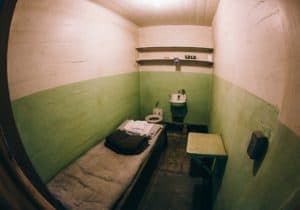
Solitary Has Become The Go To Punishment
Throughout this country starting in the late ’80s and early ’90s, solitary confinement has become the go-to punishment. It was originally designed for violent offenders. If an inmate attacked a guard or stabbed another inmate they would be sent to solitary.
In the ’90s states like New York built thousands of solitary cells. New York created entire prisons that were just solitary cells, these prisons have 1500-2000 inmates who are all in solitary. When these newly built solitary cells were not being filled, the administration started making smaller infractions punishable with solitary time. So in 2014 when I went to prison almost any offence could and was being punishable with solitary time. Smoking a cigarette in the bathroom (which everyone does, including the guards) was an offence that could land you in solitary.
Inconsistent Punishments
When I was at Mohawk box I was in a cell by myself for 45 days before being sent to Midstate box to do another 60 days. I started to go crazy and was yelling to my neighbor just so I could talk to someone. The guy in the cell next to me was named B Money. I asked B money what he was in the box for and for how long? B money got 90 days for slicing another inmate in the face with a can top. They couldn’t find the weapon but had witness’s that fingered B money. I was shocked!!! I was in the box for 120 days for failing a drug test.
Yea you heard that right! The guy who slices someone’s face open get’s 90 days in the box. The guy who is on depression medication gets 120 days for failing a drug test.
Wonderful groups like Solitartywatch.org are doing great work exposing the horrors of solitary confinement. Check out the article (cycle of addiction) I wrote for their Voices From Solitary series.
Light At The End Of The Tunnel
On Jan 1st 2016, I was In the box and the guards came around and handed everyone a packet. This packet stated that a class action lawsuit brought about by the New York Civil Liberties Union had been filed a few years prior. The NYCLU won the lawsuit. The packet that we got said that many changes were going to be taking place in solitary.
Certain little things were going to be implemented like a shower curtain, a phone call once a month, and a step-down program. This step-down program was designed to gradually reintroduce inmates into general population. I think that is essential.
“Deprived of normal human interaction, many segregated prisoners reportedly
suffer from mental health problems including anxiety, panic, insomnia, paranoia, aggression and depression” 
Craig Haney, PhD, a social psychologist at the University of California, Santa Cruz, who has studied the effects of incarceration.
When someone is locked in a 6ft-10ft room for 5-6 months, and then one day you say ok go back to the regular jail, they are going to have sensory overload as I did. Just like Dr Haney’s research shows, social isolation can lead to paranoia and aggression. Putting a paranoid angry inmate back in general population with thousands of guys is not a good idea.
This step-down program would allow them to have classes or interactions for a few hours a day with other inmates. This would start a month or 2 before they are released from solitary. This allows their brain to get used to some social interaction again. Unfortunately for me, only one change took place during my time in solitary and that was the shower curtain. I will say even though the shower curtains they installed only covered from my neck to my knees, it was nice to have some privacy.
On June 12th 2018, the NY state assembly passed the #HaltSolitary act. The bills Lead sponsor Jeffrion Aubry of District 35 in Queens made it clear how essential and needed these reforms are. He said;
“Solitary confinement has been identified by the United Nations as torture under the Mandela Rules. Inmates in SHUs are locked into their cells 23 hours a day with one hour of recreation time in an outdoor cage. They get no phone calls, no personal property, no programming, no religious services and there are no legal limits to how long they can be kept. Some prisoners have been in the SHU for decades.”
Hopefully, people will see that solitary confinement should be a last resort punishment. It should be used only for violent infractions, and not for months and years on end. When you place mentally ill people or drug addicts in solitary for minor infractions it causes them to deteriorate. They will suffer mentally, physically, emotionally and socially both during solitary and when they get released.
The time I spent in solitary was by far the most traumatic, worst part of my incarceration. I saw some wild, violent, scary things happen in prison, and none of it comes close to affecting me as much as solitary did. My greatest fear of being sent back to prison is the thought of spending even 1 more night in the box!!!
-Kyle R-
Thank you Solitarywatch.org for featuring my article about the cycle of addiction and punishment in solitary confinement.
The cycle of addiction in solitary confinement.
Related Questions
Is Solitary Confinement Common In Other Parts Of The World? The revised UN Standard Minimum Rules For The Treatment Of Prisoners (the Nelson Mandela Rules) state that “Imprisonment and other measures which result in cutting off an offender from the outside world are afflictive by the very fact of taking from the person the right of self-determination by depriving him of his liberty. Therefore the prison system shall not, except as incidental to justifiable segregation or the maintenance of discipline, aggravate the suffering inherent in such a situation.” (penalreform.org). The UN concluded that solitary confinement should be used for no longer than 15 days except in extreme circumstances.
Even though these rules and guidelines were put in place, many places around the world including the US still practice solitary confinement on a daily basis.
What Is The Longest Time Someone Was In Solitary Confinement? Albert Woodfox was the longest-standing solitary confinement prisoner in the US. He was kept in solitary confinement in a 6ft-9ft cell almost continuously for 43 years in a Louisiana state prison.


